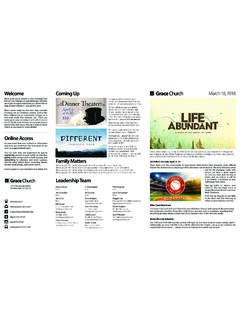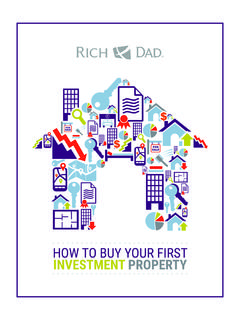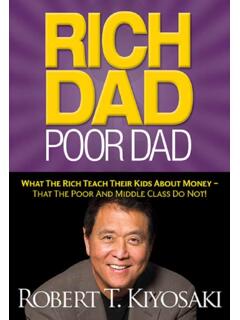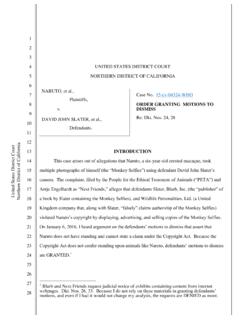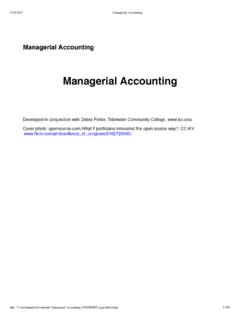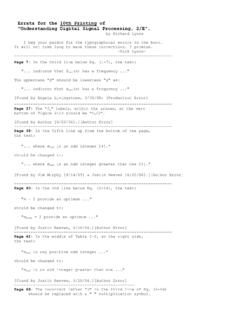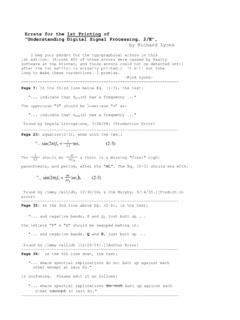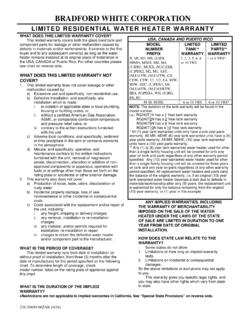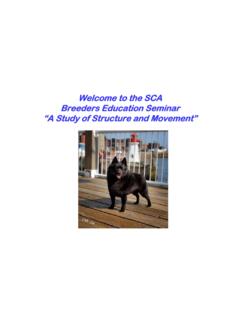Transcription of Welcome to your Civil Rights Movement lesson! Front Row’s ...
1 Welcome to your Civil Rights Movement lesson! Front Row's content is designed to meet every student at his or her own individual learning level, so everybody can participate with minimal prep by you. Your packet includes materials all FREE and ready-to-go for use in your class. Topics in this Civil Rights Movement unit include: Select articles, each available in at 5 different reading levels: o Jim Crow Laws o Brown v. Board of Education o Rosa Parks o Civil Rights Act of 1964. Vocabulary list and discussion questions Civil Rights Movement timeline project Video activity on the Greensboro Four Primary sources analysis activity o Police reports o Letter from Birmingham Jail Note: This is just a sampling of Front Row's Civil Rights Movement materials! You can get access to additional materials with a free Front Row account: 10+ more articles on Civil Rights topics such as: o Montgomery Bus Boycott o Ruby Bridges o Martin Luther King Jr.
2 O Freedom Riders o Black Panther Party More projects, video lessons, group discussions, etc.! Sign up for your FREE account: GENERAL. MATERIALS: UNIT VOCABULARY &. TIMELINE ACTIVITY. Vocabulary Words discrimination demonstration segregation boycott integration sit-in desegregation riot racism Movement inequality injustice oppression Civil Rights activist Civil disobedience protester unconstitutional nonviolence separate but equal . Civil Rights Movement Vocabulary Words discrimination (n): the unjust or harmful treatment of different groups of people, especially on the grounds of race segregation (n): the enforced separation of different racial groups into separate public facilities, neighborhoods, schools, or organizations integration (n): bringing groups with different characteristics together in social groups or institutions desegregation (n): the removal of laws that separate people into different public facilities, neighborhoods, schools, or organizations based on race racism (n): prejudice, discrimination, or hostility directed against someone of a different race based on the belief that one's own race is better inequality (n): difference in circumstances oppression (n).
3 Ongoing cruel or unjust treatment or control activist (n): a person who works towards social change protester (n): a person who takes action to show the public they disagree nonviolence (n): the use of peaceful means, not force, to bring about political or social change demonstration (n): a public meeting or march protesting against something or expressing views on an issue boycott (v): to refuse to participate or interact with an organization as a protest sit-in (n): a form of protest in which demonstrators occupy a place, refusing to leave until their demands are met riot (n): a violent disturbance of the peace by a crowd Movement (n): a group of people working together towards a cause injustice (n): lack of fairness Civil Rights (n): the Rights of citizens to political and social freedom and equality Civil disobedience (n): the refusal to follow certain laws as a peaceful form of protest unconstitutional (adj.)
4 : not in agreement with the Constitution separate but equal : a part of the law that allowed racial segregation Civil Rights Movement Vocabulary Words discrimination: demonstration: segregation: boycott: integration: sit-in: desegregation: riot: racism: Movement : inequality: injustice: oppression: Civil Rights : activist: Civil disobedience: protester: unconstitutional: nonviolence: separate but equal : Civil Rights Movement Civil Rights Movement Timeline Teacher Guide Students will construct a timeline of the Civil Rights Movement as they learn about the key events of the Movement . Suggested Procedures 1. On the following pages, you will find booklets representing key events of the Civil Rights Movement . There are extra booklets in case students need to remake any.
5 2. Students should print out each booklet and fold them in half. 3. On the inside, students describe the event and its importance, and sketch a relevant picture or representation of it. 4. Students should determine an appropriate order in which to attach the booklets on the timeline paper. Using their articles from the unit and further research if they wish, they should write the appropriate years corresponding to each event on the Front of the booklets. 1. Event t3. Even t5. Even Date Date Date t2 t4 t6. Even Even Even Date Date Date [ picture ] [ description ]. Civil Rights Movement Civil Rights Movement Timeline Teacher Guide List of events to include in timeline: Jim Crow Laws instituted (1870s - until they were struck down one by one). Founding of the NAACP (1909).
6 Plessy v. Ferguson case (1896). Brown v. Board of Education (1954). Arrest of Claudette Clovin (March 1955). Arrest of Rosa Parks (Dec. 1955). Montgomery Bus Boycott (Dec 1955 - Dec 1956). SCLC established (1957). Integration of Central High School (the Little Rock Nine) (Sept. 1957). Greensboro Four sit-in (Feb. 1960). Ruby Bridges attends integrated school (Spring 1960). Student Nonviolent Coordinating Committee founded (April 1960). The Birmingham Campaign (April 1963). Martin Luther King, Jr. writes his Letter from Birmingham Jail (April 1963). The March on Washington (Aug. 1963). Freedom Summer (Summer 1964). Passage of the Civil Rights Act of 1964 (July 1964). Malcolm X assassinated (Feb 1965). Selma to Montgomery Marches (March 1965). Voting Rights Act (Aug 1965).
7 Formation of the Black Panther Party (1966). Martin Luther King, Jr. assassinated (1968). Civil Rights Movement Martin Luther The Birmingham King, Jr. Campaign assassinated Jim Crow SCLC Laws established instituted Integration of Central High Passage of the School (the Voting Rights Act Little Rock Nine). The March Founding of on the NAACP Washington Formation of the Brown v. Black Panther Board of Party Education Student Plessy v. Nonviolent Ferguson Coordinating case Committee (SNCC). founded Arrest of Malcolm X. Claudette Clovin assassinated Montgomery Greensboro Bus Boycott Four sit-in Martin Luther King, Jr. Arrest of Rosa writes his Parks Letter from Birmingham Jail . Ruby Bridges attends Freedom integrated Summer school Passage of the Civil Rights Act of 1964.
8 Selma to Montgomery marches ARTICLES: JIM CROW LAWS. Note: With a Front Row account, you would be able to assign articles so every student automatically receives the article that is at his/her individual level. Your students would also receive the reading comprehension questions without the answers marked. Sign up for a free Front Row account: Jim Crow Laws Discussion Questions 1. What led to the creation of Jim Crow laws? 2. What were some of the Jim Crow laws discussed in the article? 3. What made these Jim Crow laws unfair? 4. What does the phrase separate, but equal mean? 5. Is it possible to have a society that is separate, but equal? Explain why or why not. 6. Do you think that putting an end to Jim Crow laws resulted in fair & equal treatment for people of all races?
9 Why or why not? Civil Rights Movement Back Share article Grade: The Civil War ended in 1865. This freed the slaves. They could earn money. Some people did not like that. The Writing slaves were not treated well. People made bad laws. They were Jim Crow laws. Anchor Skill: Informative What were Jim Crow laws? How did Jim Crow laws were not fair. They made life hard for they make life harder? black people. The laws did not let all people be free. Reading Black kids went to one school. White kids went to Anchor Skills: Explicit Information, Claims &. another school. The bus had areas for black people in Evidence the back. White people could sit in any seat. Black people Where could white people sit on had to use different water fountains. They had different the bus?
10 Bathrooms. Only in the back Only in the Front In any seat Why were Jim Crow laws bad laws? The Civil War just ended. Jim Crow was not a real person. The laws were not fair to every person. Choose two reasons that Jim Crow laws were not fair. A man using a water fountain in the Jim Crow south White schools were better. They were not real laws. White people were treated better. White schools were Stores would not serve black good. Many black schools were falling apart. Black people. people had to sit in the back of the bus. They had to leave their seat for a white person. Many stores would They were taken away in the 1960s. not serve black people. Why did people make Jim Crow laws? To make money They did not want the freed slaves to earn money To get good schools A bus in which black people had to sit in the back Jim Crow laws were around for 100 years.
